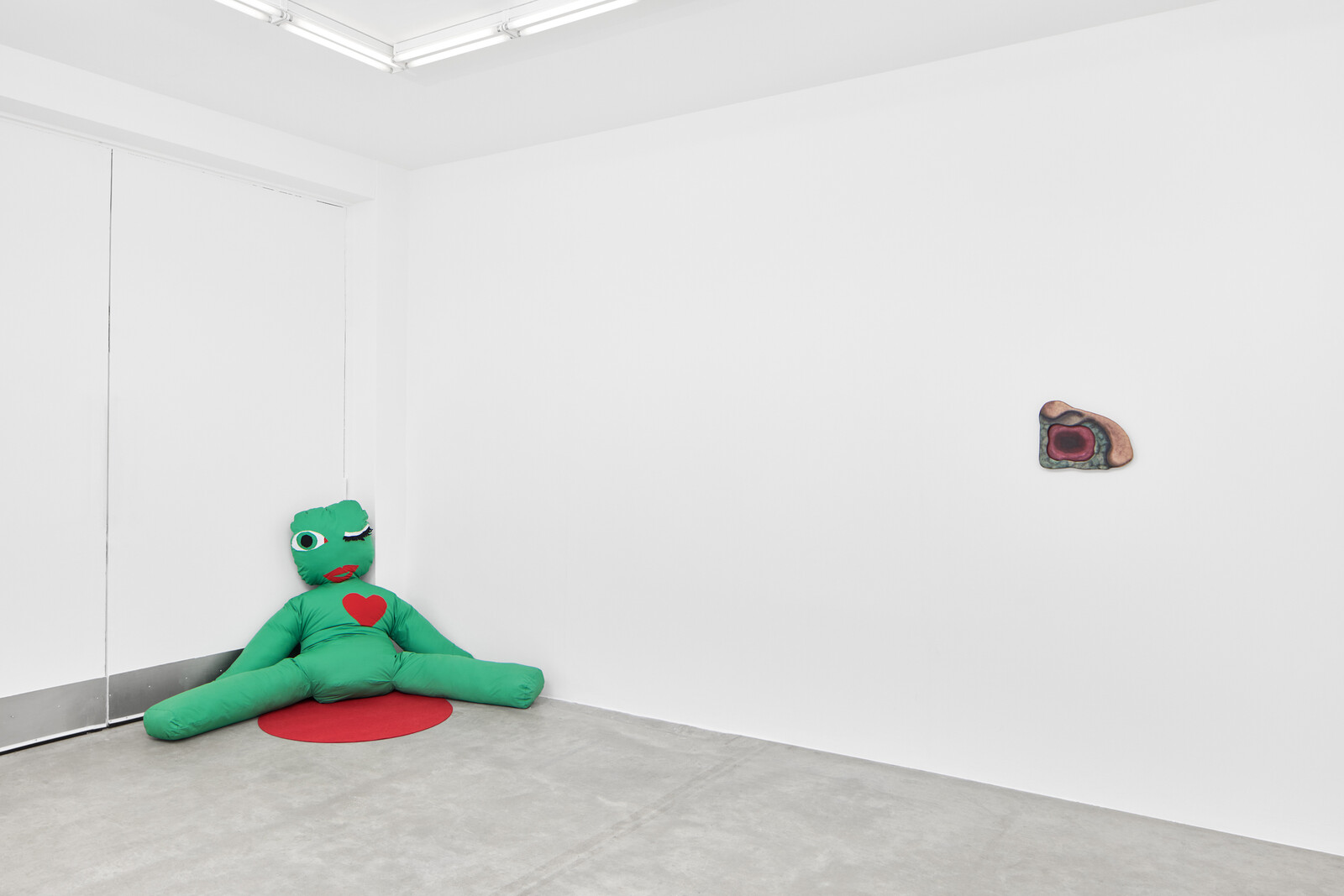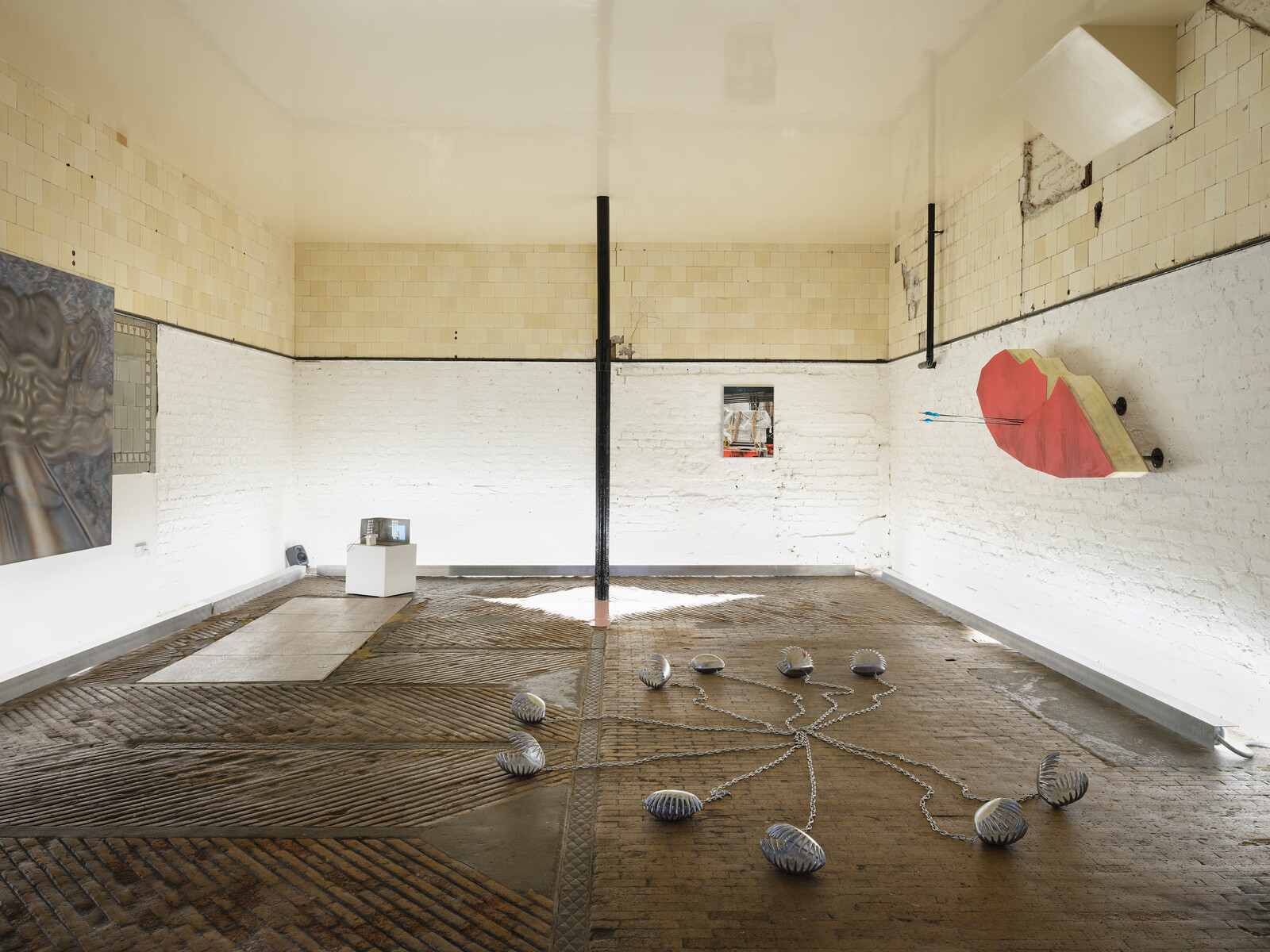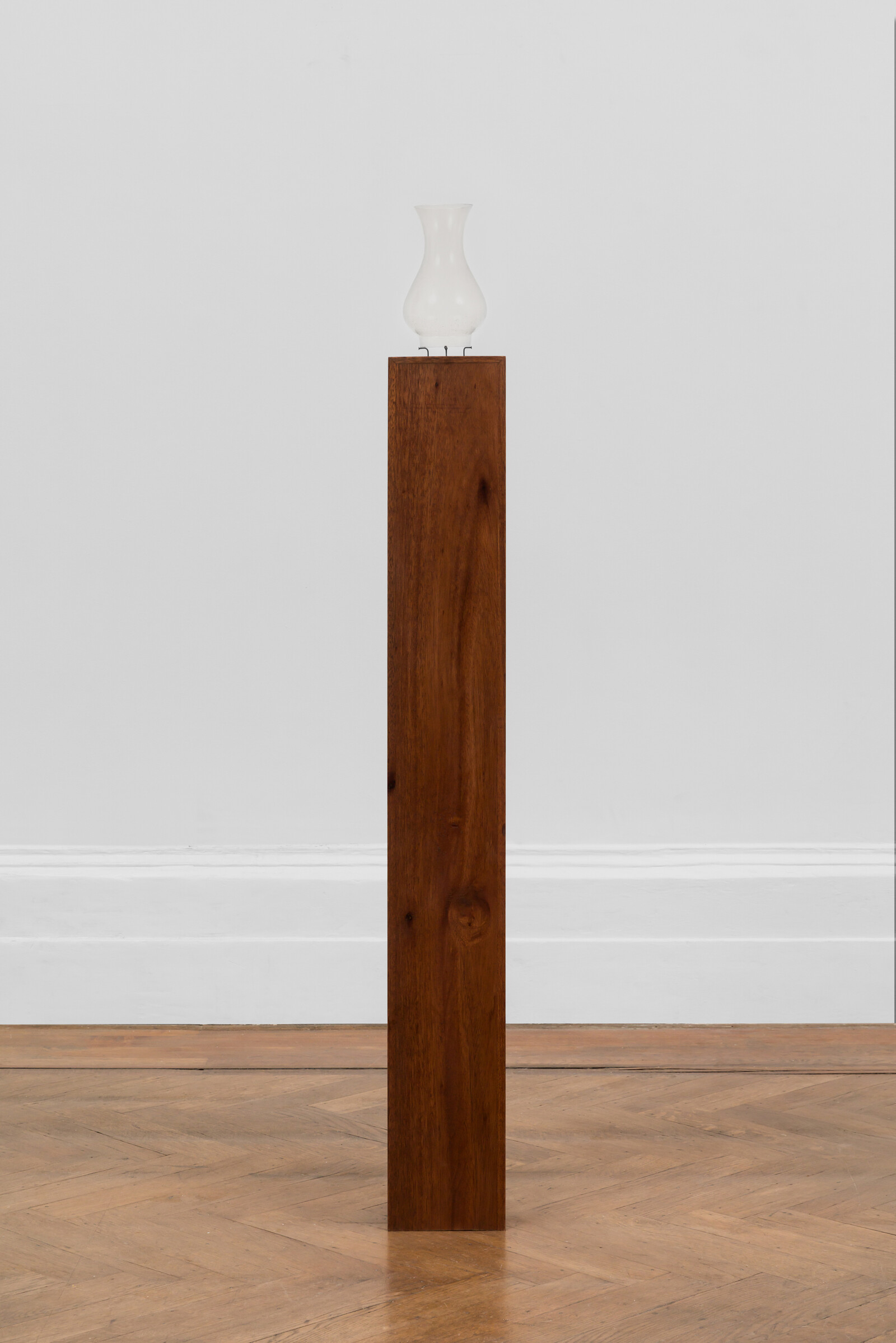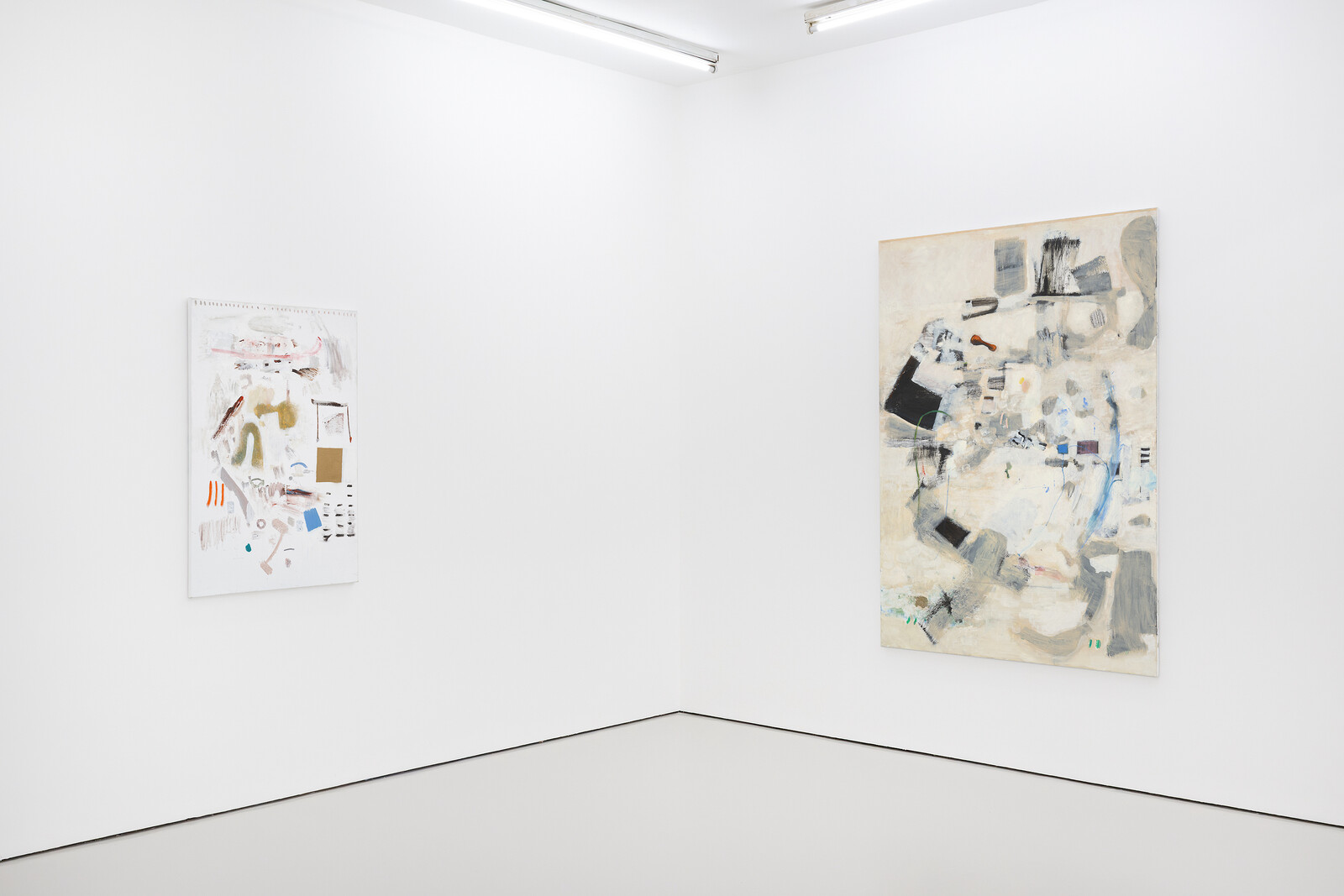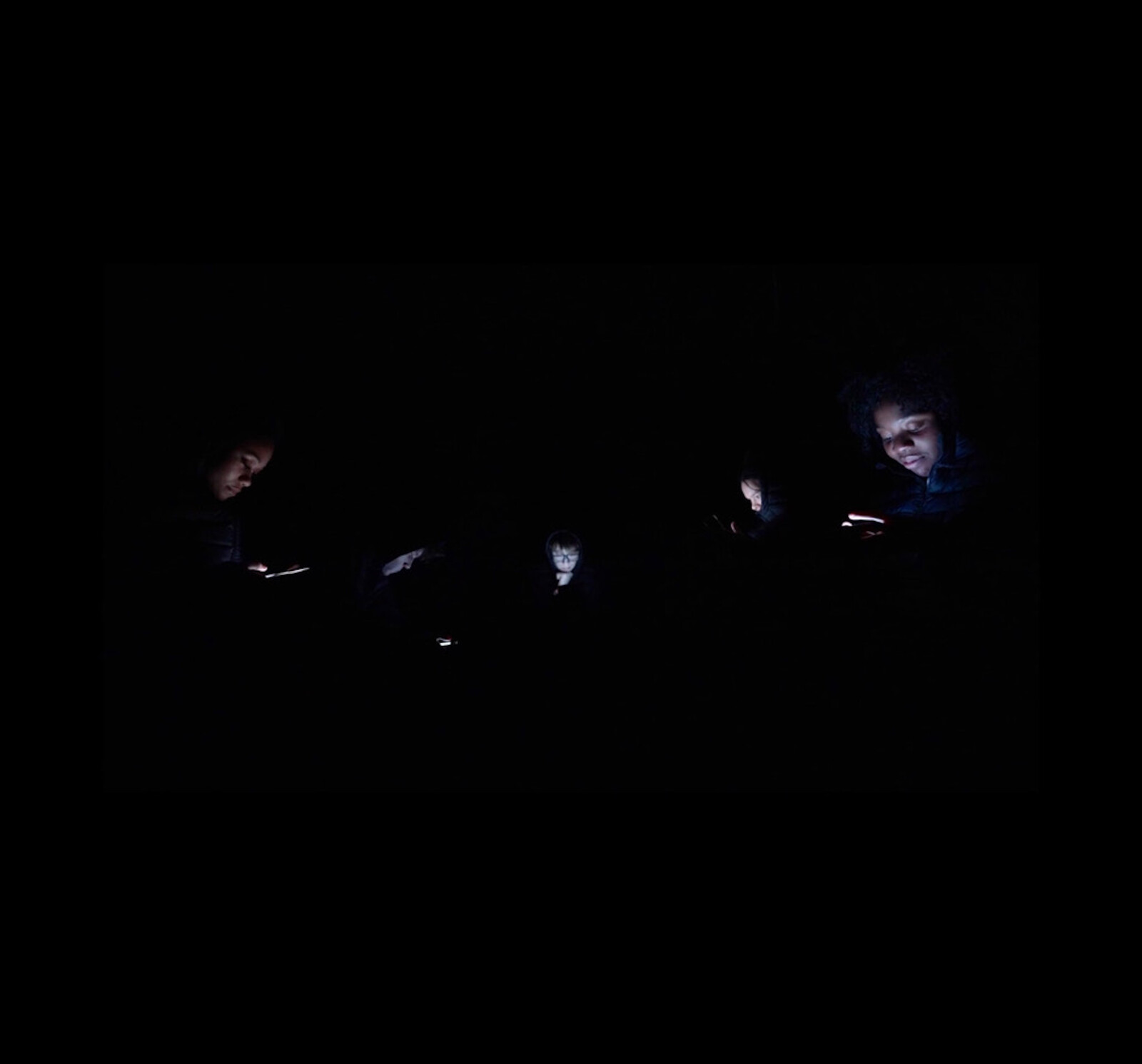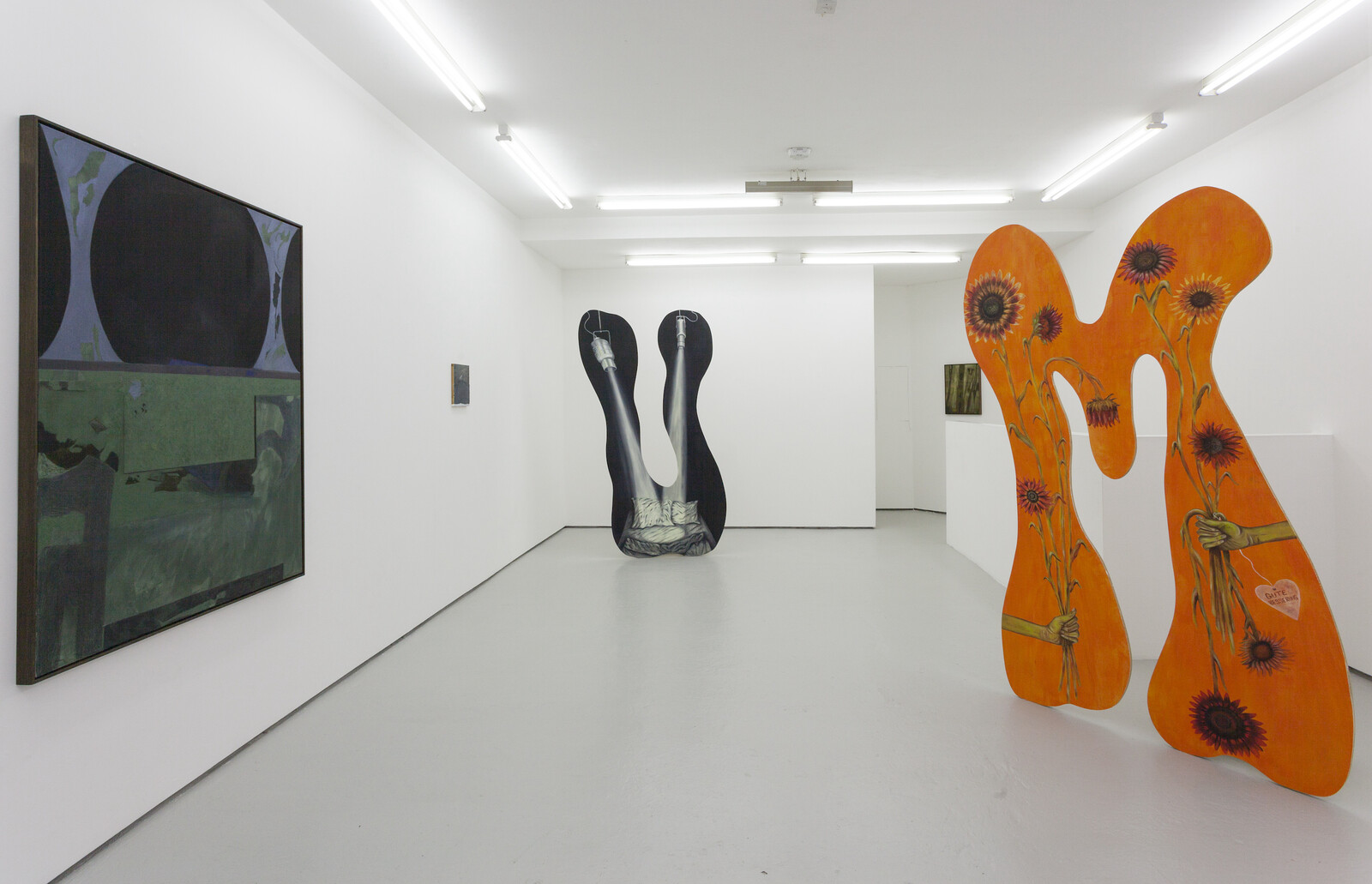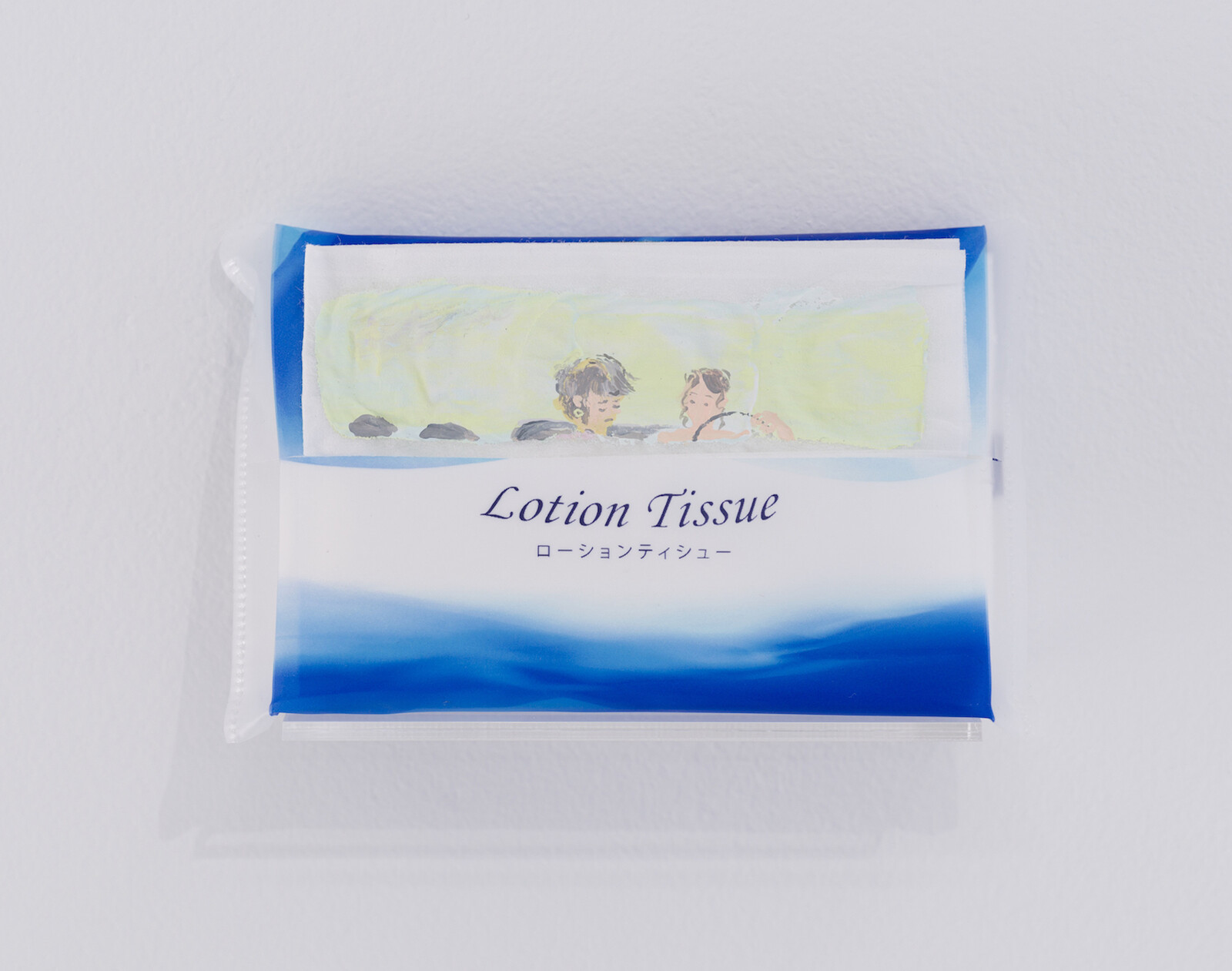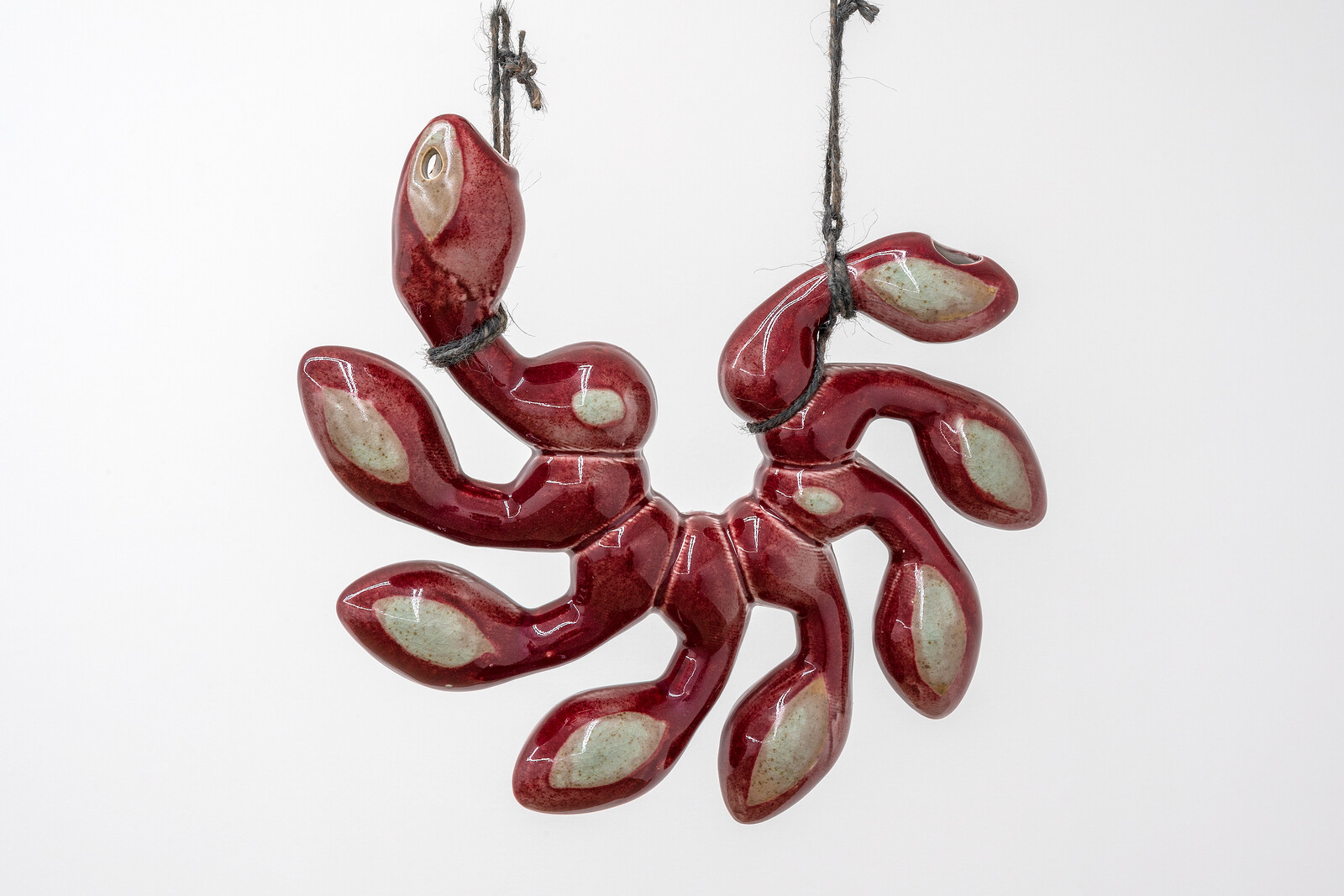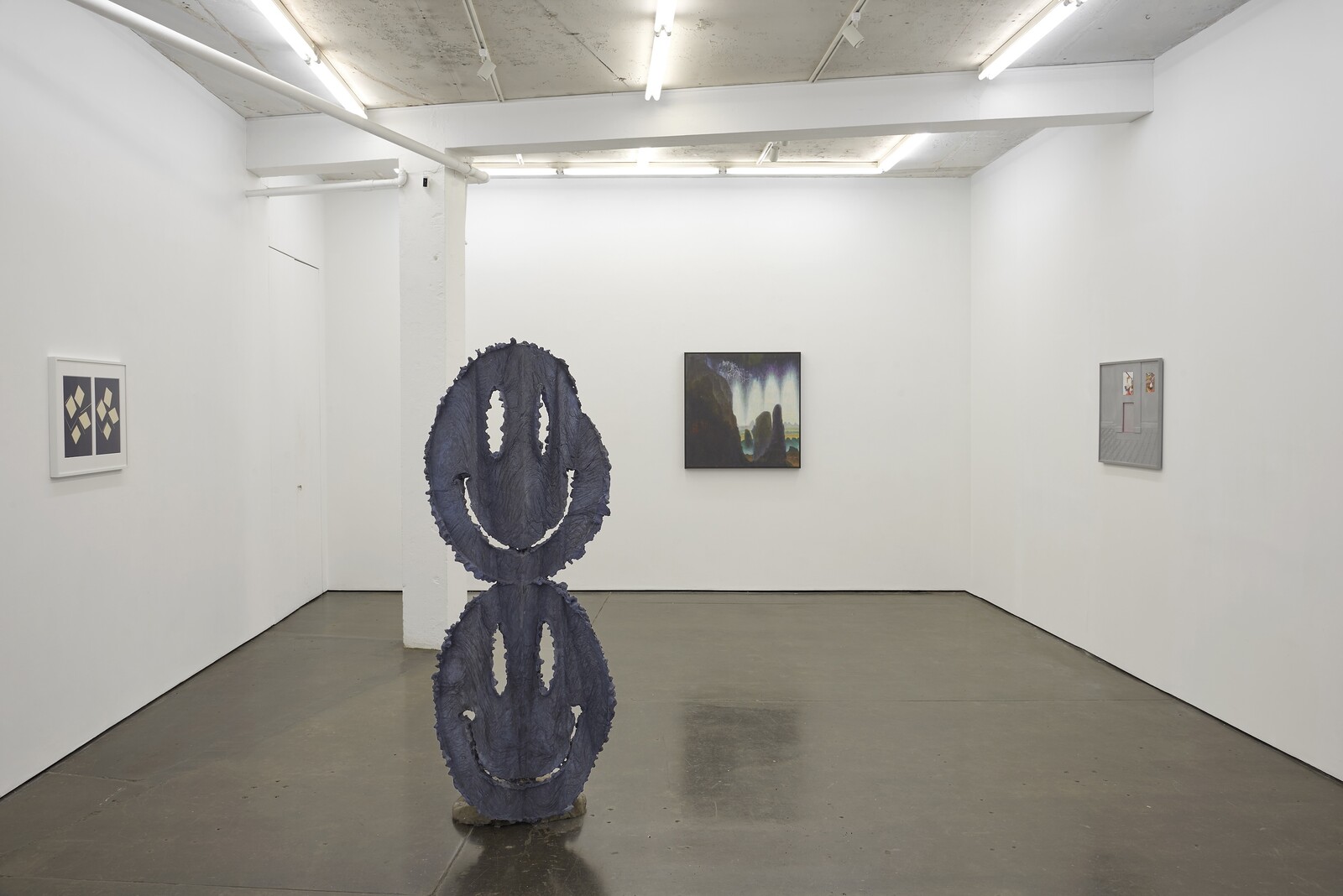“I’ll be honest, I was a little shocked to recall the plate of bratwurst and mash that I tucked into three days after my husband died,”1 writes Kat Lister in The Elements. She goes on to describe Margaret Stroebe and Henk Schut’s “Dual Process Model” of bereavement—the way mourners shift between loss and reparation, a fluctuation of feelings in the face of tragedy. As Lister writes, things happen at the same time—grief, pain, bratwurst, mash. The audaciousness of living on. How to hold all these things at once: to be in London looking at a collaborative project where twenty-three galleries allocate their spaces to their international counterparts or stage shared exhibitions that bring together works of wildly disparate forms. To talk about hosting when homes are being ruined.
This uneasy simultaneity is visible throughout Condo. At Warsaw gallery Import Export, hosted by Rodeo, the artworks on view discuss war, heartbreak, and climate catastrophe all at once. Just to the left of the entrance is horses [konie] (2023), a large acrylic and ink on canvas by Ukrainian artist Veronika Hapchenko. Based on mosaics from Pripyat, a town that serviced and housed workers at the Chernobyl Power Plant, it’s a grayscale work that reflects on the historic suppression of Ukrainian culture. Across the small space is a collaborative work Drama I (2021) by SAGG Napoli and Stefania Batoeva, a wall-mounted sculpture of half a broken heart with arrows poking into it. On the floor between these two works is Skinscape V. (2024) by Mia Dudek where the Polish, Lisbon-based artist spilled pink silicon on a part of the floor, the result a beautiful disaster. The show is called “Ruined”—by love and politics. In the show, the two are not comparable, but the title serves as another reminder that they coexist.
Your enthusiasm to tell a story (green) (2022) by Dardan Zhegrova in the corner of the small room at Soft Opening, hosting Pristina gallery LambdaLambdaLambda is an almost human-sized plush figure with cartoon eyes (one shut), red lips, a red heart. It’s reciting poetry that’s hard to hear in the echo of the gallery, but its slumped sad presence on the floor atop a red puddle hints at a feeling, or allows a viewer to project a feeling (more heartbreak) on to it. Another figure on to which I project emotion is Michael Dean’s Unfucking Titled (fuck) (2021), a reinforced concrete and blue-gray pigment sculpture standing erect in the middle of a group show, “We’ll Be Your Mirror,” at Ehrlich Steinberg from Los Angeles hosted by Herald St. The works on view are meant to examine doubling, replicas, and mirroring, but Dean’s sculpture stands alone in the middle of the space, feeling quite close to human, still also hardened.
There’s another twinning with a human body in the paintings on wood by Tanja Nis-Hansen brought by Paris gallery Sans titre hosted at Union Pacific. Making up the letters M and U, they are a semi-independent part of a larger installation (it spells CRUMBS) about care work and illness. The U is painted with a black-and-white image of an empty bed and two theatrical lights shining on it. In the verso is a collage of pages from books (including Virginia Woolf’s 1926 essay On Being Ill), a painting of a sick person in bed, and drawings of flowers.
Sans titre, Misako & Rosen from Tokyo, and Union Pacific conceived of this presentation as a group show, titled “Picture a Vacuum” after a poem by Kae Tempest. It includes paintings by Danish artist Martin Aagaard Hansen that are made of oil and pastel but feel like they are composed of earth or another organic matter, and tender small landscape paintings by Kazuyuki Takezaki. Nis-Hansen also shows two small paintings of herself performing, wearing an outfit composed of leaves and reading poetry (she also performed during the opening weekend of Condo, and the speaker and microphone she used were left in the middle of the space).
There is a very different kind of performance at Galerie Kandlhofer from Vienna hosted by Carlos/Ishikawa, showing Exit Strategy by Richie Culver, where viewers stand outside the gallery and peep through a glass to see a darkened room with a group of young teenagers (child actors) sitting still, glued to their phones—a familiar site made abnormal and uncomfortable by glaring at it through a sliver of glass, into the dark. Also at Carlos/Ishikawa: paintings by Libasse Ka, large abstractions on white canvas that are filled with art historical references—Kandinsky, Rembrandt, Twombly—but cohere to individual, quite beautiful work that wears its obsession with the painterly on its sleeve. In the adjacent room the gallery hosts Chapter NY, with bright and figurative paintings by Cheyenne Julien, and Stella Zhong, showing horizontal strip paintings that are reminiscent of Giorgio de Chirico. Different in their color palette and scale from each other and from Ka’s work in the next room, the works offer contrasting suggestions for how contemporary painting might respond to art history.
The structure of Condo—the travel, the shared spaces—results in a lot of small paintings on view. I loved paintings from New York and Brussels (where Ka is based), as well as Tbilisi (Vati Davitashvili’s paintings of dinner tables and open windows brought by LC Queisser, hosted at Hollybush Gardens) and Tokyo (Emi Otaguro painting on mini tissue packets as part of a group show by KAYOKOYUKI at Sadie Coles HQ). This is complemented by small sculptures whose materiality is imbued with meaning. Peana from Mexico City (hosted at Public) are showing ceramic water flutes made by musician and artist Vica Pacheco using 3D modelling to design these amorphous instruments, traditional in the Indigenous community she is from near Oaxaca. In the space, the flutes hang from strings at chest level, almost touchable but very fragile (if you wanted to see them touched there’s a video on view showing how Pacheco plays them). At Hot Wheels, Maria Toumazou’s sculpture Untitled (Koula’s idea) (2024) is typical of the Cypriot artist’s process, in which found materials lead her to learn a skill like glass blowing or rewiring a violin, the material transformed through story and process.
To see so many shows in one weekend lets resonances form organically. A dual process: to look at art and look for something in the art. I see heartbreak and war, fragility and joy and music. The poem by Tempest that gave the Union Pacific exhibition its title begins, “Picture a vacuum/ An endless and unmoving blackness/ Peace/ Or the absence, at least/ of terror/ Now.” It’s from 2016, but here, it becomes a reminder of how art and ideas can reverberate across time, and make exchange feel possible—even find a way to keep going, audacious as that is.
“Condo London,” a collaborative exhibition featuring 50 galleries across 23 London spaces, runs through February 17, 2024.
Kat Lister, The Elements: A Widowhood (London: Icon Books, 2021), 45.
